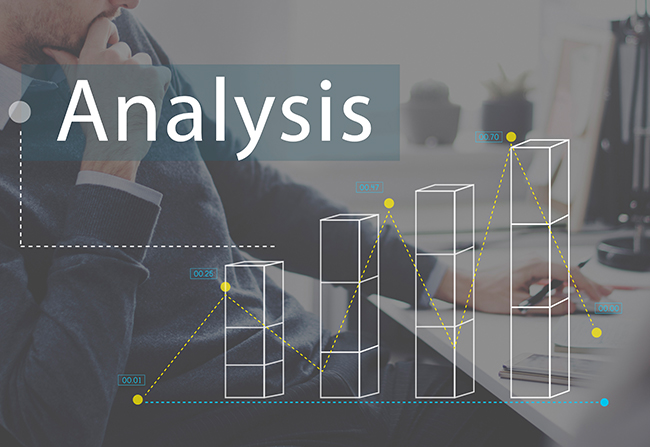
Technical analysis is a cornerstone of trading, enabling traders to predict market movements by analyzing price charts and patterns.
While there are numerous tools and techniques in technical analysis, some indicators stand out as essential for both novice and experienced traders. Mastering these indicators can significantly improve your decision-making and trading outcomes.
What is Technical Analysis?
Technical analysis is the study of historical price data, volume, and patterns to forecast future price movements. Unlike fundamental analysis, which focuses on the intrinsic value of an asset, technical analysis relies on chart patterns, indicators, and trends to identify trading opportunities.
Traders use technical analysis to determine:
- Entry points: When to buy or sell.
- Exit points: When to close a position.
- Market trends: The overall direction of the market.
Key Technical Indicators Every Trader Should Know!
Moving Averages (MA)
Moving averages smooth out price data to identify trends over time. The two most common types are:
- Simple Moving Average (SMA): Calculates the average price over a set period.
- Exponential Moving Average (EMA): Gives more weight to recent prices for faster trend identification.
How to Use:
- Look for crossovers (e.g., when a shorter MA crosses above a longer MA) as potential buy or sell signals.
- Use MA to identify support and resistance levels.
Relative Strength Index (RSI)
RSI measures the speed and change of price movements to determine overbought or oversold conditions. It ranges from 0 to 100, with:
- Overbought: RSI > 70 (potential for a price decline).
- Oversold: RSI < 30 (potential for a price increase).
- How to Use:
- Use RSI to confirm trends or spot divergences between price and momentum, which may signal a reversal.
Moving Average Convergence Divergence (MACD)
MACD is a momentum indicator that shows the relationship between two moving averages of a security’s price. It consists of:
- MACD line: The difference between the 12-day and 26-day EMA.
- Signal line: A 9-day EMA of the MACD line.
- Histogram: Visual representation of the distance between the MACD and signal lines.
How to Use:
- A crossover of the MACD line above the signal line indicates a potential buy signal.
- Divergences between MACD and price may indicate weakening momentum.
Bollinger Bands
Bollinger Bands consist of a moving average with two standard deviation lines plotted above and below it. These bands expand and contract based on market volatility.
How to Use:
- When prices touch the upper band, the asset may be overbought; touching the lower band may indicate oversold conditions.
- Use bands to identify breakout opportunities during periods of low volatility.
Volume Indicators
Volume reflects the strength or conviction behind a price movement. Popular volume-based indicators include:
- On-Balance Volume (OBV): Tracks cumulative buying and selling pressure.
- Volume Oscillator: Highlights increases or decreases in trading volume.
How to Use:
- Confirm trends by analyzing whether price movements are supported by strong volume.
- Identify potential reversals when volume diverges from price trends.
Combining Indicators for Better Accuracy
While individual indicators can be powerful, combining them often yields more reliable signals. For instance:
- Use RSI with Bollinger Bands to validate overbought or oversold conditions.
- Combine MACD with Volume Indicators to confirm breakout signals.
By integrating multiple tools, traders can reduce false signals and improve confidence in their trades.
Benefits of Using Technical Indicators
- Trend Identification: Recognize market direction and adjust strategies accordingly.
- Precision in Timing: Determine optimal entry and exit points.
- Risk Management: Spot potential reversals or warning signals before major losses occur.
Common Mistakes to Avoid
- Overloading Charts: Using too many indicators can lead to conflicting signals and analysis paralysis.
- Ignoring Context: Indicators work best when used in conjunction with market trends and fundamentals.
- Over-reliance on One Tool: No single indicator is foolproof. Use a combination for more accurate insights.
Practical Tips for Mastering Technical Indicators
- Practice with Demo Accounts: Apply indicators in a risk-free environment to understand their behavior.
- Customize Settings: Adjust default parameters to suit the asset and time frame you’re trading.
- Stay Updated: Continuously learn and adapt to market changes, as new tools and techniques emerge regularly.
Conclusion:
Mastering technical analysis requires a solid understanding of key indicators and how to apply them effectively. By focusing on tools like moving averages, RSI, MACD, and Bollinger Bands, traders can better predict market movements and optimize their strategies. Combine these indicators with sound risk management for a comprehensive approach to trading success.
Remember, technical analysis is as much an art as it is a science. Consistent practice and refinement will turn theoretical knowledge into practical trading expertise.




